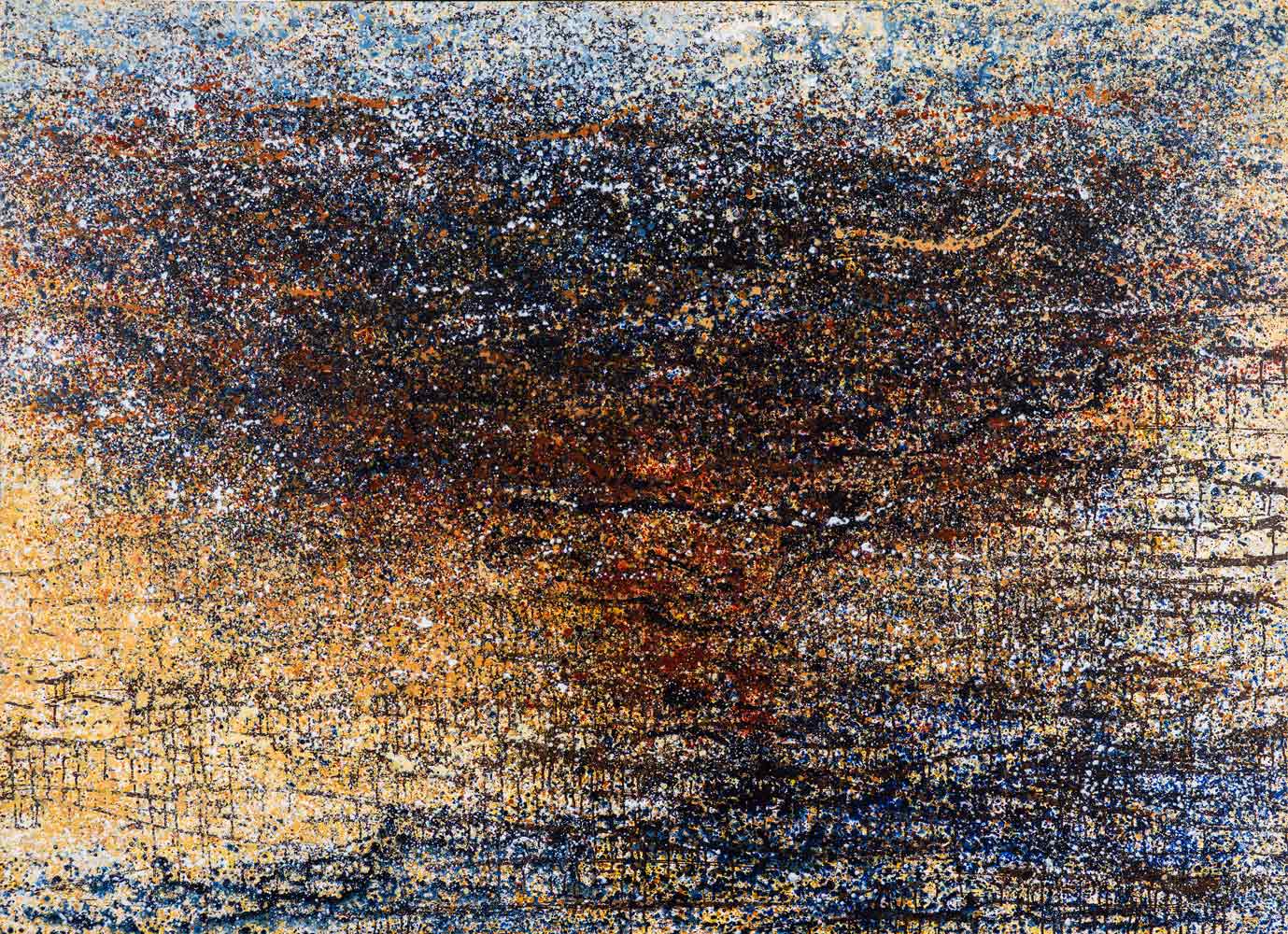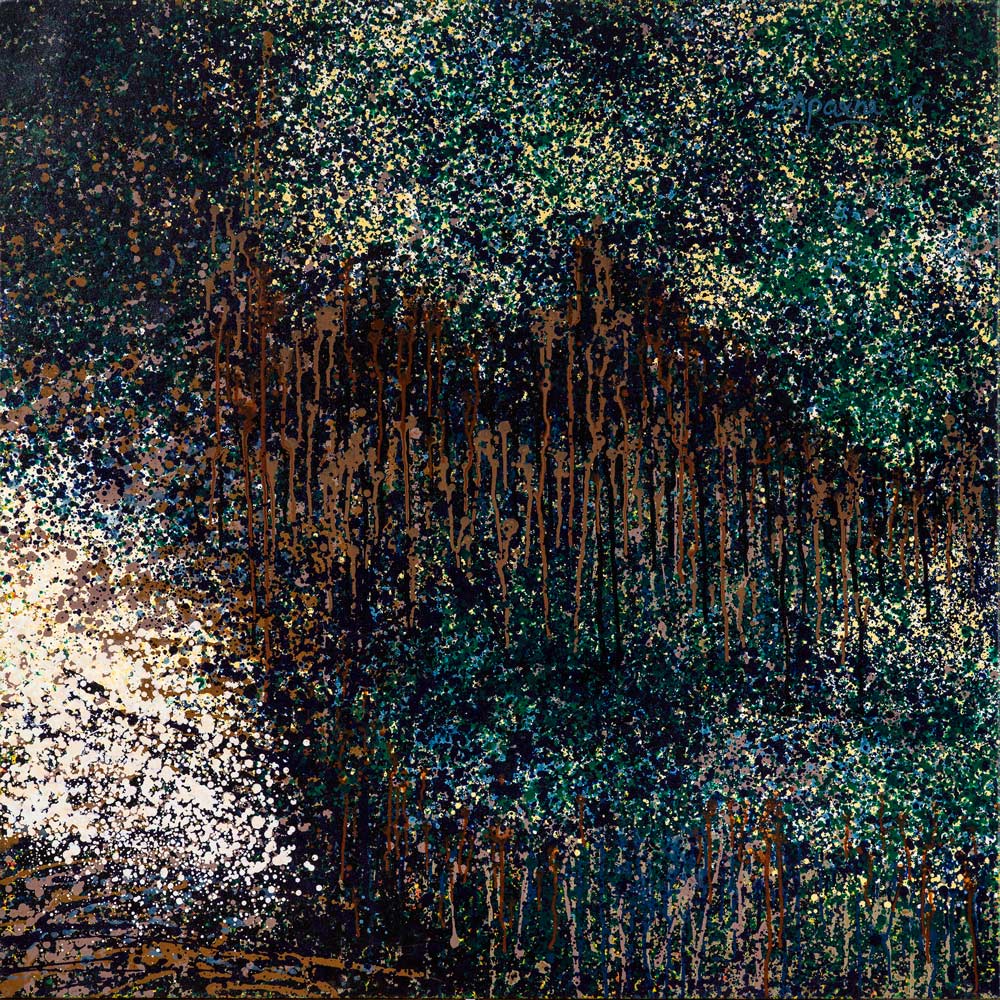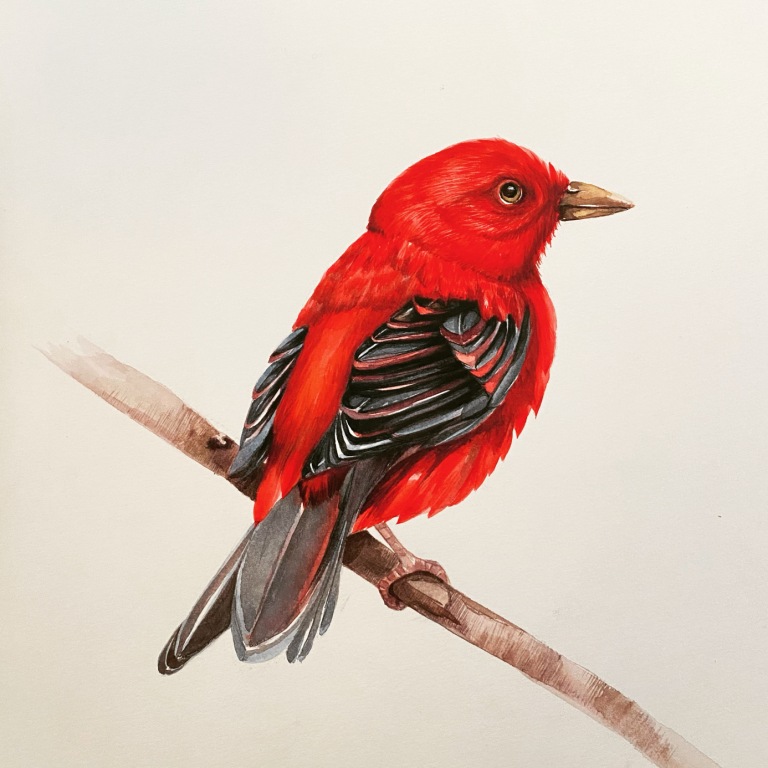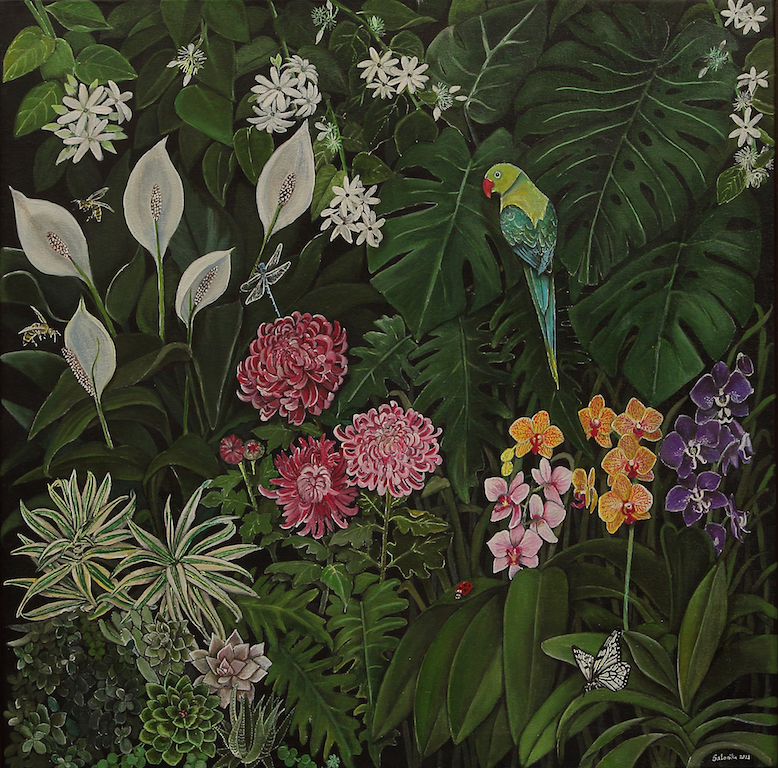Gallerie Nvyā presents a solo show by Aparna Bidasaria titled “FALAK – Meditations on the Banyan” that showcases a tapestry of evocative paintings of the Banyan Tree, curated by Uma Nair
What: A solo show by Aparna Bidasaria: “Falak – Meditations on the Banyan” presented by Gallerie Nvyā
When: Opening on 18th June, 2022. The exhibition will be on view till 25th June, 2022
Where: Centre for Contemporary Arts, Bikaner House, between Pandara Rd, &, Shahjahan Rd, India Gate, New Delhi 110011
Preview: 18th June 2022, Saturday. 5:30pm to 8:00pm
Timings: 11:00am to 7:00pm (on the other days)
Presented by Gallerie Nvyā, artist Aparna Bidasaria’s solo show titled FALAK – Meditations on the Banyan opens on 18th June at the Bikaner House. The exhibition showcases a tapestry of evocative paintings of the Banyan Tree, an enduring symbol of wisdom, protection, timelessness and civilisational antiquity. The banyan is as old as history older than time. The show is closing on 25th June. Curated by noted art scholar and critic Uma Nair, the exhibition has a total of 23 paintings in colours that stand out for artistic exquisiteness, meditative quality and compositional harmony. It is both a visual grandeur and an experiential delight that compels the viewer’s attention on the entrancing nature of paintings.
“I drip the paint on my canvas to capture the cascade of falling roots, of the roots playing with the wind, I try to capture them stretching to meet the earth. My colours try to capture the intensity of the sun, the cool and quiet of the Bargad’s shadows, the magic and more that the Banyan means to me. Left on its own devices the Bargad stretches itself across eons of time and space personifying the beauty and power of nature,” says artist Aparna Bidasaria. “Chromatic harmonies of the banyan tree with its intricate roots become a mirror of nature’s splendour,” says curator Uma Nair who has followed Bidasaria’s works for the past 7 years. “If midnight blue tints echo the intensity of a moonlit night in Jugnoo, chrome yellow and autumnal instincts in Pitambar inspire you to think of the eternal bonds and touching acts of trees in the world,” she continues.
The largest work, titled Madamast, in the show is a dense pointillist green entendre that makes us feel the preciousness of our connection to our environment and the solemnity of our obligation to safeguard the future and to protect the Earth we are bequeathing to future generations.
Founder Director of Gallerie Nvyā, Tripat Kalra says: “ Aparna’s art is clearly demonstrated in the quiet art of pointillism and the principle of drip that was so sublimely created into mosaics of netted sunbeams by the master Jackson Pollock. But Aparna moves beyond territory of both eastern and western artistic techniques, delicate dots and lines are employed to denote shape and form against a pointillist background that echoes of the past and present melding to give us studies on the banyan that are glimpsed in the time zone of sunrises and sunsets.”
From early experiments in style Aparna’s iconic stylization of roots and thick network of branches in the banyan become most developed in her new works, and is evident here in the elongated lithe lines and strokes, and the concerted gaze. The banyan for Aparna, is a testament to her continued search for the best means through which to represent our culture. The banyans of Aparna, who has been painting for the past fifteen years, have also an urbane feel and manifest a startling modernity that looks more at abstract expressionism, bringing to mind techniques of surrealist photography. She also uses the tree as a metaphor for her spiritual odyssey as well as her sense of solitude. In doing so, she creates an art that transcends national and cultural boundaries and attracts audiences in both the East and the West.
Aparna’s studies on the banyan tree done over seasons and climes and times will stand as a testament to the power of conscience, insight and our collective ability to make the world a better place. Aparna’s conclusions of the banyan tree probe us to realize that human beings do not live in isolation, but as part of something much bigger. As she so eloquently states in her ode to the banyan tree, the beauty of the words “in nature nothing exists alone.”
“The banyan tree has many stories to tell us, the leaves whispering the tales, the branches intertwine like dancers explaining those lores, the roots moving to the music of the wind, talking to it,” opines Aparna in a poem she creates as an ode to the exhibition.
The banyan tree stands in all its majesty and grace-within its branches and roots it demonstrates the complexity of the natural world — and our ability to disturb it — like the climate crisis. In many ways this exhibition exhorts us to think about going green-about the harm we do to our planet earth and environs. Each day, we pump more than 90 million tons of global warming pollution into the atmosphere. In this modern millennium we are experiencing the impact of what scientists predicted decades ago — higher temperatures, extreme weather, the emergence and re-emergence of infectious diseases, and rising sea levels.








